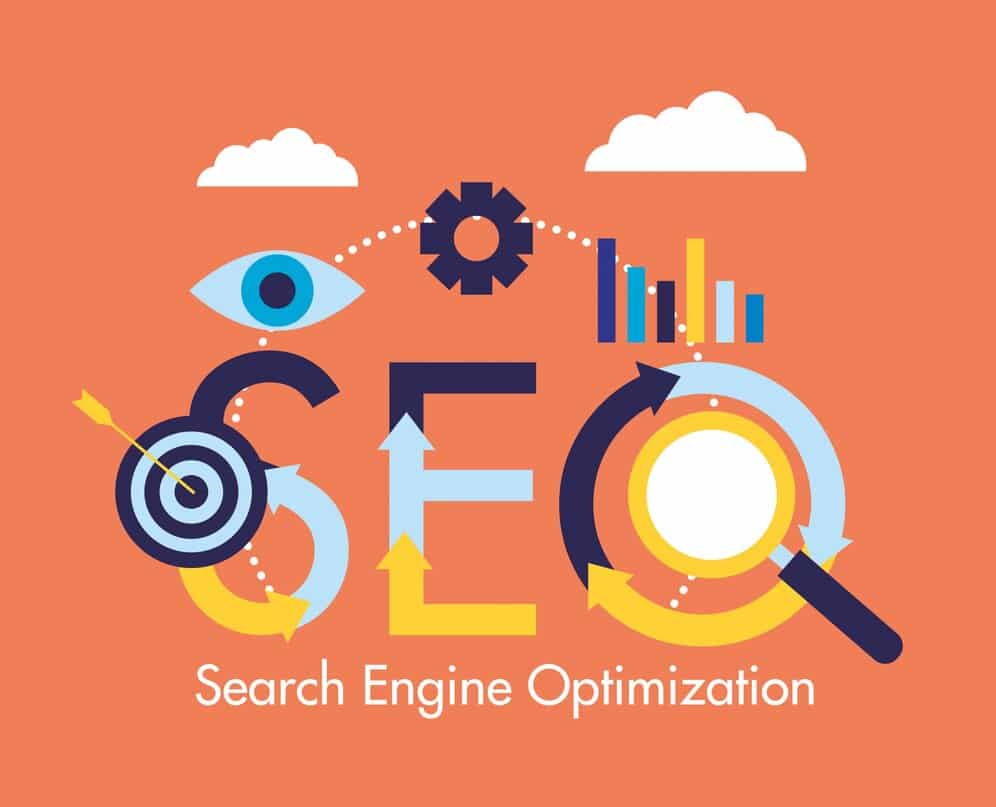What Is Google’s Helpful Content Update?
Back in 2023, Google rolled out the Helpful Content Update, a significant change aimed at cleaning up search results. This update targets content crafted solely for search engine rankings rather than for people. The focus is on quality over quantity, ensuring that users get relevant, informative content. It’s a move away from clickbait and keyword-stuffed pages that don’t really answer users’ questions. Instead, Google is prioritizing content that demonstrates expertise and trustworthiness.
Why Was the Update Introduced?
Google introduced this update to enhance user experience by emphasizing high-quality content. With the rise of low-quality, irrelevant content, users were often left frustrated, hopping from one link to another without finding the answers they needed. This update aims to address that by pushing creators to produce content that is genuinely helpful and relevant to user queries. It’s part of Google’s ongoing effort to align search results with user expectations and needs.
What Does Google Consider to Be Helpful Content?
To be considered helpful, content should be original and insightful. Google looks for content that offers unique perspectives and information not found elsewhere. Here are some key points:
- Originality: Content should provide new information or a unique take on a topic.
- Relevance: It should directly answer the user’s query.
- Engagement: The content should be engaging enough to keep users on the page, reducing bounce rates.
By focusing on these aspects, content creators can not only meet Google’s criteria but also maximize their Google search ranking. The helpful content update is a call to action for creators to rethink their strategies and prioritize user-focused content.
The Impact of Google’s Helpful Content Update on Content Creators
How Does the Update Affect Bloggers?
Bloggers are seeing a shift in how their content is ranked. Google’s Helpful Content Update is all about prioritizing content that genuinely helps users, rather than just ticking SEO boxes. This means that content created solely to game search engines might find itself slipping down the ranks. Bloggers who focus on delivering authentic, useful information are more likely to see their keyword rankings improve. Here’s what bloggers need to consider:
- Create content with a clear purpose that addresses user needs.
- Avoid overloading articles with keywords just to attract search engines.
- Engage readers with genuine insights and personal experiences.
Why Is the Helpful Content Update Important?
This update is a game-changer because it shifts the focus from quantity to quality. For content creators, this means a chance to stand out by producing content that truly resonates with their audience. The update encourages:
- Building trust with readers through reliable and accurate information.
- Enhancing the user experience by providing valuable insights.
- Focusing on long-term engagement rather than short-term traffic spikes.
What Should Content Creators Do?
Content creators need to adapt quickly to these changes to maintain or improve their visibility in search results. Here’s a simple checklist to follow:
- Conduct a thorough content audit to identify which pieces meet the new standards.
- Revise or remove content that doesn’t provide real value to your audience.
- Stay updated with Google’s guidelines to ensure your content aligns with best practices.
By understanding and implementing these strategies, content creators can navigate the changes brought by Google’s update and continue to thrive in the ever-evolving world of digital content.
Best Practices for Creating Helpful Content
Focusing on User Intent
Creating content that aligns with what users are actually searching for is key. Understanding the user’s intent means knowing whether they’re looking for information, trying to make a purchase, or seeking a specific service. To get this right, you need to dig into the search terms they’re using and the questions they’re asking. It’s not just about keywords anymore; it’s about understanding the context behind those keywords. You can start by asking yourself: What problem is the user trying to solve? What answers are they looking for? Once you nail this, your content will naturally become more relevant and engaging.
Ensuring Originality and Uniqueness
In a sea of content, originality is your lifeboat. You need to offer something fresh that hasn’t been said a million times before. This doesn’t mean you have to reinvent the wheel, but you should add your own spin or unique perspective. Maybe it’s incorporating your personal experiences, or perhaps it’s presenting data in a new way. The goal is to provide value that stands out. Remember, Google loves content that showcases expertise and insight, so don’t shy away from sharing your knowledge.
Incorporating Multimedia Elements
Gone are the days when plain text was enough. Today’s users expect a rich experience. Incorporating multimedia elements like videos, infographics, and interactive content can significantly boost engagement. These elements not only make your content more appealing but also help in explaining complex ideas more clearly. Plus, multimedia can break up the monotony of text, making your content easier to digest. Just make sure these additions are relevant and enhance the user’s understanding, rather than distract from the core message.
Adapting Your Content Strategy Post-Update
Conducting a Content Audit
First things first, you’ve got to know what you’re working with. A thorough content audit is essential. Go through your site and check what’s outdated, what’s still relevant, and what needs a complete overhaul. Look for pieces that aren’t performing well – maybe they’re not getting the clicks or the engagement you hoped for. This step is like cleaning out your closet; you need to figure out what to keep, what to toss, and what to fix up.
Creating User-Focused Content
Once you’ve sorted through your content, it’s time to focus on what your audience actually wants. Think about the questions they have and the problems they’re trying to solve. Your content should be centered around these needs. Forget about stuffing your pages with keywords; that’s old news. Instead, aim to provide clear, concise answers and insights. When your readers find what they’re looking for, they’re more likely to stick around and come back for more.
Regularly Updating and Refreshing Content
The internet moves fast, and your content needs to keep up. Regular updates are key to staying relevant. Set a schedule to review and refresh your content periodically. This doesn’t mean just changing a few words here and there. Sometimes, you might need to add new information, update stats, or even rewrite sections to keep things fresh. By doing this, you’re showing your readers that your site is a reliable source of up-to-date information. Plus, Google loves fresh content, which can help boost your rankings.
Monitoring Success After the Update
Key Metrics to Track
After Google’s Helpful Content Update, keeping an eye on the right metrics is important to see how your content is doing. Organic traffic is a big one. If your traffic drops, it might mean the update hit you, and you need to adjust. Also, look at bounce rate and time on page. If people are leaving quickly, your content might not be as helpful as you think.
Tools and Techniques for Measurement
To measure these metrics, tools like Google Analytics and Google Search Console are your best friends. They give you insights into how your content is performing. Set up custom dashboards to track changes over time. This way, you can spot trends and make informed decisions. Don’t forget about A/B testing for different content strategies to see what works best.
Understanding User Engagement
User engagement tells you a lot about your content’s effectiveness. Are people commenting, sharing, or spending time on your site? Engagement metrics can include social shares, comments, and even the number of returning visitors. If engagement is low, think about ways to make your content more interactive or relevant to your audience’s needs. Maybe add a question at the end of your articles to encourage comments or include a poll.
Common Pitfalls to Avoid with Google’s Update
Identifying Unhelpful Content
When it comes to Google’s Helpful Content Update, one big mistake is having content that doesn’t add much value. If your articles just repeat what’s already out there without offering anything new, Google might not rank them well. It’s crucial to create content that’s fresh and insightful. Think about what readers really want to know and offer them something unique.
Avoiding Keyword Stuffing
Remember the days when stuffing keywords into your content was the way to go? Well, those days are long gone. Now, keyword stuffing can actually harm your ranking. Instead, focus on using keywords naturally. Write like you’re having a conversation with your readers. This not only helps with SEO but also makes your content more readable and engaging.
Maintaining Content Quality
Quality over quantity is the name of the game with this update. It’s not about how much content you produce, but how good it is. Make sure your content is well-researched, accurate, and provides real value to your audience. Regularly update your content to keep it relevant and useful. This keeps readers coming back and shows Google that your site is trustworthy and authoritative.
Future Trends in Content Creation
The Role of AI in Content Development
AI is changing the game for content creators. Instead of spending hours crafting each piece, AI tools can help generate ideas, draft articles, and even edit text. This doesn’t mean writers are out of a job. AI is more like a helpful assistant, not a replacement. It can handle repetitive tasks, letting humans focus on creativity and strategy. But remember, AI isn’t perfect. It’s crucial to fact-check and add a human touch to ensure the content resonates with readers.
Evolving User Expectations
Users today are more demanding than ever. They want quick answers and engaging content. This means creators need to step up their game. It’s not just about writing; it’s about connecting with your audience. Consider these:
- Speed: Make sure your site loads fast. No one likes waiting.
- Engagement: Use polls, quizzes, and interactive elements to keep readers hooked.
- Relevance: Stay updated with current trends and topics that matter to your audience.
Staying Ahead of SEO Changes
SEO isn’t static; it evolves. Google updates its algorithms frequently, and content creators must adapt. Here are some tips:
- Keep Learning: Stay informed about the latest SEO practices.
- Audit Regularly: Check your content for outdated info and refresh it.
- Focus on Quality: High-quality content is always in demand. Avoid shortcuts like keyword stuffing.
By keeping these trends in mind, content creators can stay relevant and continue to engage their audiences effectively.
Frequently Asked Questions
What is Google’s Helpful Content Update?
Google’s Helpful Content Update is a change to its search algorithm that aims to prioritize high-quality, useful content over content designed just to rank well in search results. It rewards websites that provide valuable information to users.
Why was the Helpful Content Update introduced?
The update was introduced to improve user experience by promoting content that is genuinely helpful and relevant to users’ search queries. It addresses the problem of low-quality content that doesn’t meet user needs.
How does the update affect bloggers?
Bloggers who focus on creating content for readers rather than search engines benefit from this update. Those who rely on SEO tricks without providing real value may see a drop in their search rankings.
What should content creators do to adapt?
Content creators should focus on producing original, user-focused content that meets the needs of their audience. Regular content audits and updates can help maintain content quality and relevance.
What are some best practices for creating helpful content?
Best practices include understanding user intent, ensuring originality, incorporating multimedia elements, and regularly updating content to keep it fresh and relevant.
What are common pitfalls to avoid with the update?
Avoid creating content solely for search engines, keyword stuffing, and neglecting content quality. Focus on providing valuable information that meets user expectations.






Leave a Reply